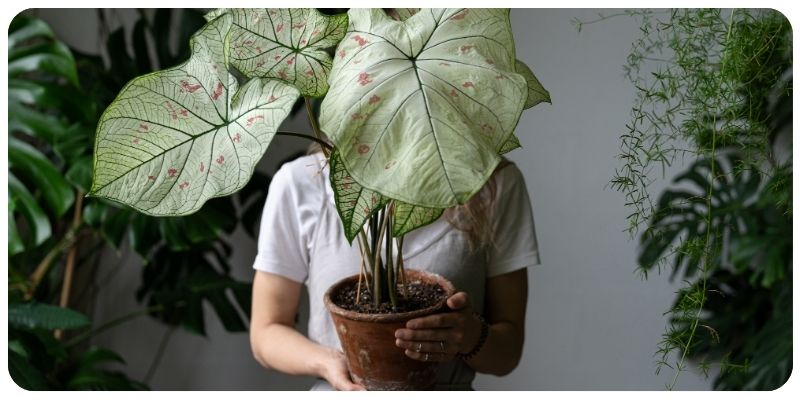
Top 10 Common Houseplant Problems and How to Fix Them
Houseplants bring beauty and life into your home, but like all plants, they can encounter a variety of problems. Whether it’s yellowing leaves, pests, or stunted growth, there’s usually a solution that can bring your plants back to health. In this guide, we will cover the top 10 common houseplant problems and offer practical solutions for each one.
1. Yellowing Leaves
Yellowing leaves are one of the most common houseplant problems and can result from various factors, such as overwatering, underwatering, or lack of light. To fix this issue:
- Check Watering: Ensure that you are not overwatering or underwatering. Most plants prefer the soil to dry out slightly between waterings.
- Adjust Lighting: Move the plant to a brighter spot if it’s not receiving enough light, or provide indirect light for plants that don’t tolerate direct sunlight.
- Monitor Humidity: For tropical plants, low humidity can cause leaf yellowing. Use a humidifier to raise the humidity levels if needed.
2. Leaf Drop
Leaf drop is often caused by environmental stress, such as sudden changes in temperature or lighting conditions. Here's how to address it:
- Avoid Drafts: Keep plants away from cold drafts or heat sources like radiators and air conditioners.
- Gradual Changes: If you need to move the plant to a different spot, do so gradually to allow it to acclimate to new light levels.
3. Brown Leaf Tips
Brown leaf tips can occur due to low humidity, over-fertilizing, or inconsistent watering. To prevent and fix brown leaf tips:
- Increase Humidity: Use a humidifier or mist the leaves regularly to maintain adequate humidity levels.
- Flush the Soil: If over-fertilization is the problem, flush the soil with water to remove excess fertilizer salts.
- Consistent Watering: Ensure that your watering routine is consistent to avoid stressing the plant.
4. Pests: Aphids, Mealybugs, and Spider Mites
Pests like aphids, mealybugs, and spider mites can wreak havoc on houseplants if left untreated. To control pests:
- Isolate the Plant: Move the infested plant away from other houseplants to prevent the pests from spreading.
- Natural Insecticides: Use neem oil, insecticidal soap, or rubbing alcohol to treat the affected areas. Be sure to treat both the tops and bottoms of leaves.
- Maintain Cleanliness: Regularly wipe down leaves and keep the plant’s area clean to prevent further infestations.
5. Root Rot
Root rot is often the result of overwatering or poor drainage. To address root rot:
- Check the Roots: Remove the plant from its pot and inspect the roots. Trim away any black, mushy roots with sterilized scissors.
- Improve Drainage: Repot the plant in fresh, well-draining soil and use a pot with drainage holes to prevent water from sitting at the bottom.
- Adjust Watering: Reduce the frequency of watering to allow the soil to dry out between waterings.
6. Leggy Growth
Leggy growth occurs when a plant stretches toward the light, resulting in long, weak stems. To correct leggy growth:
- Increase Light Exposure: Move the plant to a brighter location or supplement with artificial grow lights.
- Prune Regularly: Trim back leggy stems to encourage bushier, more compact growth.
7. Slow or Stunted Growth
Plants can experience slow growth due to insufficient light, poor soil conditions, or lack of nutrients. To promote growth:
- Improve Soil Quality: Repot the plant in fresh, nutrient-rich soil to give it a boost.
- Fertilize Appropriately: Apply a balanced fertilizer during the growing season to support healthy growth.
- Ensure Adequate Light: Place the plant in a bright spot with indirect sunlight or use grow lights.
8. Wilting Leaves
Wilting can be caused by both overwatering and underwatering, as well as extreme temperatures. To fix wilting leaves:
- Water Appropriately: Check the soil moisture and water the plant if the top inch of soil feels dry. Avoid overwatering.
- Check Temperature: Ensure the plant is kept in a room with a stable temperature between 65°F and 75°F.
9. Browning or Black Spots
Browning or black spots on leaves can be a sign of fungal infections or sunburn. Here’s how to fix this issue:
- Avoid Direct Sunlight: Move the plant to a location where it receives indirect sunlight.
- Treat Fungus: If fungal infections are the cause, use a fungicide to treat the affected areas, and remove any infected leaves.
10. Drooping Stems
Drooping stems are often a sign of improper watering or temperature stress. To revive drooping stems:
- Check the Soil: Ensure the soil is moist but not waterlogged. If the soil is dry, water the plant thoroughly.
- Regulate Temperature: Keep the plant in a consistent environment, avoiding exposure to extreme temperatures.
Conclusion
Many common houseplant problems can be easily fixed with proper care and attention. By identifying the cause of the issue early on and taking the appropriate steps to resolve it, you can keep your indoor plants healthy and thriving. Whether it's yellowing leaves, pests, or poor growth, understanding your plants’ needs is key to maintaining a beautiful and vibrant indoor garden.